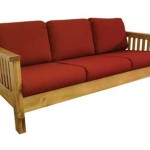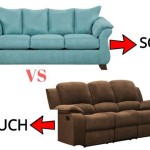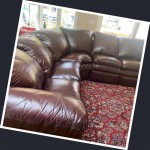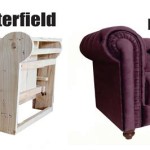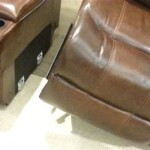Kitchen Sofa Seating: A Comprehensive Guide to Design and Integration
Kitchen sofa seating, a confluence of comfort and functionality, represents a growing trend in modern kitchen design. It moves beyond the traditional limitations of dining tables and chairs, offering a relaxed and inviting space for meals, socializing, and even casual work. This article delves into the various aspects of kitchen sofa seating, exploring its benefits, design considerations, material choices, and integration strategies to help create a truly welcoming and versatile kitchen environment.
The concept of kitchen sofa seating stems from the desire to blur the lines between living spaces. As open-plan living becomes increasingly prevalent, the kitchen is no longer solely a utilitarian space for food preparation. It has evolved into a central hub for family interaction, entertainment, and even remote work. Integrating a sofa into the kitchen reflects this shift, creating a more comfortable and welcoming atmosphere that encourages people to linger and connect.
The addition of sofa seating provides a softer, more informal alternative to traditional dining arrangements. This can be particularly appealing for families with young children or for individuals who prefer a more relaxed dining experience. Furthermore, a kitchen sofa can serve as a comfortable place to relax while waiting for food to cook, or for guests to gather and chat while the host prepares a meal. The versatility of this seating option makes it a valuable addition to any well-designed kitchen.
Key Point 1: Benefits of Integrating Sofa Seating in the Kitchen
The advantages of incorporating sofa seating into a kitchen are multifaceted, extending beyond mere aesthetics. These benefits contribute to a more functional, comfortable, and social kitchen environment.
Firstly, it enhances the social aspect of the kitchen. By providing a comfortable and inviting seating area, a sofa encourages interaction and conversation. It creates a space where family members can gather while meals are being prepared, or where guests can comfortably socialize without being confined to a formal dining room. This fosters a sense of connection and makes the kitchen a more welcoming and engaging space for everyone.
Secondly, sofa seating adds a layer of comfort and relaxation to the kitchen. Unlike the often rigid and formal structure of dining chairs, a sofa offers a more comfortable and supportive place to sit. This is particularly beneficial for individuals who spend a significant amount of time in the kitchen, whether cooking, working, or simply socializing. The added comfort can make these activities more enjoyable and less tiring.
Thirdly, it increases the functionality of the kitchen space. A sofa can serve as a multi-purpose seating area, adapting to various needs throughout the day. It can be used for casual meals, homework completion, reading, or even as a temporary workspace. This versatility makes the kitchen more adaptable and functional, catering to a wider range of activities and needs.
Finally, kitchen sofa seating can significantly enhance the aesthetic appeal of the kitchen. By introducing softer textures and more inviting shapes, a sofa can soften the often sterile and functional appearance of a traditional kitchen. This can create a more visually appealing and welcoming space, making the kitchen feel more like an extension of the living area.
Beyond these primary benefits, kitchen sofa seating can also contribute to improved storage options. Sofas can be designed with built-in storage compartments, providing additional space for stowing away kitchen essentials, such as cookbooks, placemats, or extra utensils. This is particularly useful in smaller kitchens where space is at a premium.
The overall impact of kitchen sofa seating is to transform the kitchen from a purely functional space into a more comfortable, social, and versatile area that is central to the life of the home.
Key Point 2: Design Considerations for Kitchen Sofa Seating
Careful planning and consideration are crucial when designing kitchen sofa seating. Several factors must be taken into account to ensure that the sofa complements the existing kitchen layout, style, and functionality.
Firstly, space is a primary consideration. The size and layout of the kitchen will dictate the size and configuration of the sofa. In smaller kitchens, a compact loveseat or a banquette-style seating arrangement may be more appropriate. Larger kitchens can accommodate larger sofas or sectional pieces, creating a more expansive and luxurious seating area. Careful measurement and planning are essential to ensure that the sofa fits comfortably within the kitchen space without obstructing traffic flow or hindering access to appliances and work surfaces.
Secondly, style and aesthetics are critical factors. The style of the sofa should complement the overall aesthetic of the kitchen. In modern kitchens, sleek and minimalist sofas with clean lines and neutral colors may be a good choice. In more traditional kitchens, upholstered sofas with classic designs and warm, inviting colors may be more appropriate. The goal is to create a cohesive and harmonious look that seamlessly integrates the sofa into the existing kitchen décor.
Thirdly, durability and practicality are paramount. Kitchens are often subject to spills, stains, and heavy use, so it is essential to choose a sofa that is durable, easy to clean, and resistant to damage. Fabrics such as microfiber, leather, or outdoor-grade materials are good choices for kitchen sofas, as they are relatively easy to clean and can withstand the rigors of daily use. Furthermore, the sofa should be constructed with a sturdy frame and high-quality cushioning to ensure long-lasting comfort and support.
Fourthly, functionality must be considered. The sofa should be positioned in a location that is both functional and convenient. Ideally, it should be located near a dining table or kitchen island to facilitate casual meals and socializing. It should also be positioned in a way that allows for easy access to appliances and work surfaces. The sofa can also be integrated with other kitchen elements, such as built-in storage or a breakfast bar, to maximize its functionality and versatility.
Finally, comfort is a key consideration. The sofa should be comfortable and inviting, encouraging people to relax and linger. This can be achieved by choosing a sofa with comfortable cushioning, supportive backrests, and ample seating space. Adding throw pillows and blankets can further enhance the comfort and appeal of the sofa.
By carefully considering these design factors, it is possible to create a kitchen sofa seating arrangement that is both aesthetically pleasing and functionally practical, adding a touch of comfort and style to the heart of the home.
Key Point 3: Material Choices and Maintenance for Kitchen Sofas
Selecting the right materials for kitchen sofa seating is crucial for ensuring both durability and ease of maintenance. The kitchen environment presents unique challenges, including potential spills, food stains, and general wear and tear. Choosing appropriate materials will extend the lifespan of the sofa and simplify cleaning.
For upholstery, several options offer a combination of style and practicality. Microfiber is a popular choice due to its stain resistance, durability, and relatively low cost. It is also easy to clean, making it suitable for a kitchen environment. Leather is another durable option that offers a luxurious look and feel. Leather is naturally water-resistant and can be easily wiped clean, but it is also more susceptible to scratches and stains than microfiber.
Outdoor fabrics, such as Sunbrella, are increasingly used for indoor applications due to their exceptional durability and stain resistance. These fabrics are designed to withstand the elements, making them ideal for kitchens where spills and stains are common. They are also easy to clean and maintain, making them a practical choice for busy households.
For the sofa frame, hardwood is generally considered the most durable and long-lasting option. Kiln-dried hardwood is particularly resistant to warping and cracking, ensuring that the sofa will retain its shape and integrity over time. Metal frames are also a durable option, although they may not be as aesthetically appealing as hardwood frames.
Cushioning materials play a significant role in the comfort and longevity of the sofa. High-density foam is a popular choice for sofa cushions due to its durability and support. Down-filled cushions offer a more luxurious and comfortable feel, but they require more maintenance and are more prone to sagging over time. A combination of foam and down can provide a balance of comfort and durability.
Maintenance is essential for keeping a kitchen sofa looking its best. Regular vacuuming can help to remove dirt, crumbs, and other debris that can accumulate on the upholstery. Spills should be cleaned immediately with a damp cloth and mild detergent. For more stubborn stains, professional cleaning may be required. Leather sofas should be conditioned regularly to prevent them from drying out and cracking.
In addition to regular cleaning, it is also important to protect the sofa from excessive sunlight and heat. Prolonged exposure to sunlight can cause the fabric to fade, while excessive heat can damage the upholstery and cushioning. Consider placing the sofa away from direct sunlight or using window coverings to protect it from the sun's rays.
By carefully selecting durable and easy-to-clean materials and implementing a regular maintenance routine, it is possible to keep a kitchen sofa looking its best for years to come. This will ensure that the sofa remains a comfortable and inviting addition to the kitchen.
Ultimately, kitchen sofa seating provides a unique opportunity to enhance the functionality and aesthetic appeal of the kitchen. By carefully considering the benefits, design considerations, and material choices, it is possible to create a truly welcoming and versatile kitchen environment.

Built In Bench Or Couch Kitchen Sofa Seating

Kitchen Sofa Ideas How To Choose The Perfect One For Your Room

Turn Your Kitchen Into The Heart Of Home Inspiration Corner

Create Lounge Seating In Your Kitchen Airy Kitchens

Like The Wrap Around Bench Would To Use Our Cur Farmhouse Table Banquette Seating In Kitchen Dining Nook

Create Lounge Seating In Your Kitchen Airy Kitchens

10 Ways To Work An Open Plan Kitchen And Living Space Houzz Ie

15 Ideas For Banquette Seating In The Home

Look Inside An Early 20th Century Shingle Style Getaway In The Hamptons Dining Room Design Kitchen Banquette Upholstered

30 Kitchen Islands With Seating And Dining Areas Digsdigs



